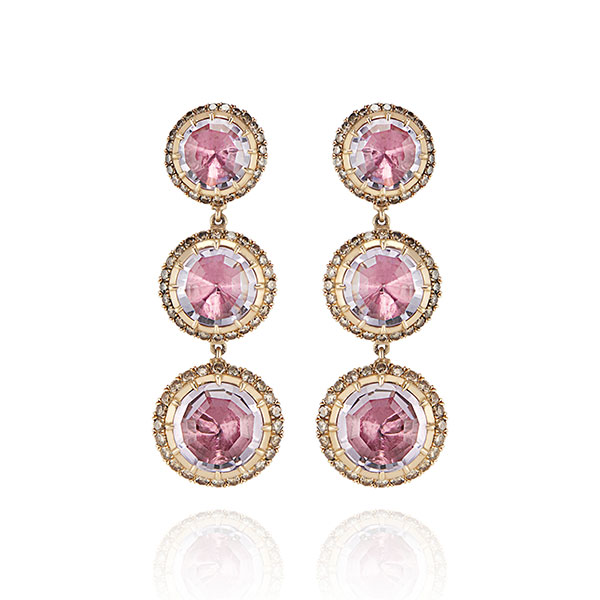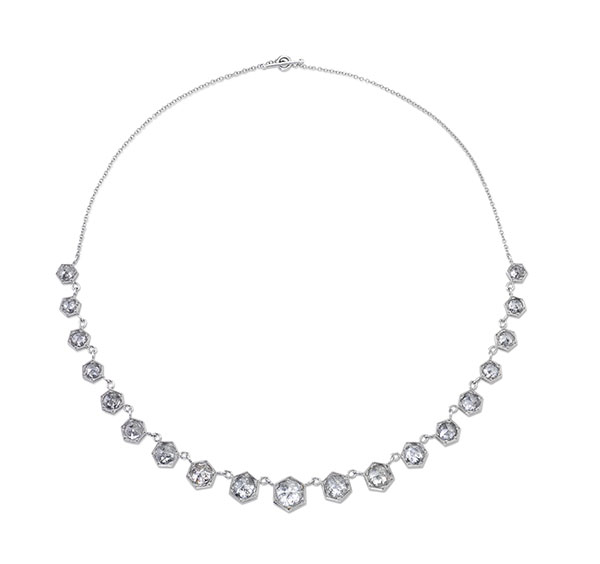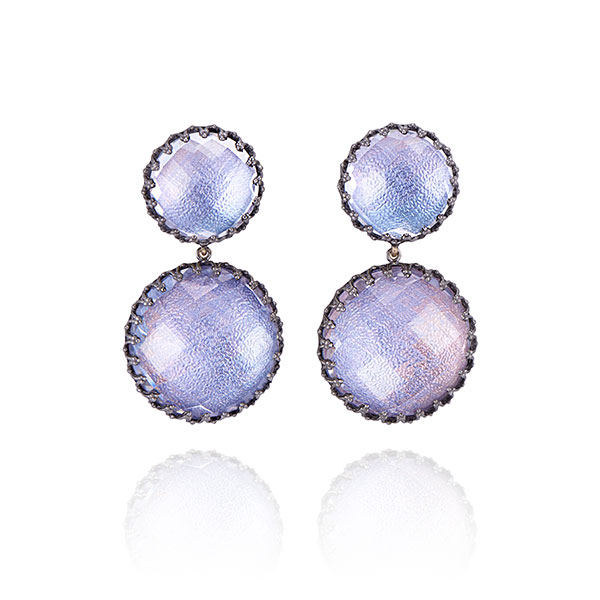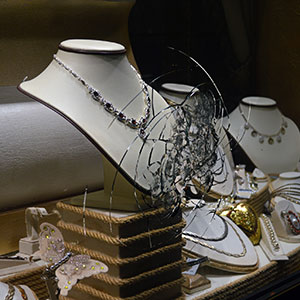
Unless you’ve been in a media bubble since the holidays, surely you know that Georgian jewels—specifically, the romantic styles of the Regency period (1811–1820)—are au courant, thanks in large part to the popularity of the Netflix show Bridgerton. The steamy drama is set in 1813 London and features characters festooned with decadent parures, dreamy girandole earrings, and ropes of pearls.
For anyone curious about some of the period’s more esoteric characteristics, we’ve highlighted three things to know, accompanied by images of contemporary jewels that channel the era’s seductive vibe. Ready, set, swoon!
Paste was used in imitation jewelry, but it wasn’t considered costume.
Jewels of the Regency period were often made of antique paste, an artful lead glass that could be faceted to mimic gemstones. Made during an era when the labor required to fashion top-notch settings was as cheap as the raw materials, the jewels attest to a tradition of craftsmanship and beauty to rival that of the genuine jewels from which they took their inspiration.
“You get sensational pieces of jewelry in the Regency era that are paste, and they’re not really considered costume,” Emily Satloff, founder of Larkspur & Hawk, said during a March 31 Gemflix presentation on “Regency Romance & Georgian Jewels.” “They still took a tremendous amount of time to set paste.”
The French were the arbiters of style.
Even though the Regency period refers to a sub-period within the Georgian era (1714–1830), which was named after the four King Georges who ruled England over the course of a century, aristocrats of the time took their style cues from France. That’s one reason why the reigning necklace design of the period, the rivière—which consists of gems that are the same size or slightly graduate in size toward a large central stone—is named after the French word for river.

The foiling technique was designed to add vibrancy to stones at night.
Georgian jewelry often made use of foils that were placed on the back of set gemstones to enhance their color, especially in dimly lit rooms.
“In the 18th century, we didn’t have the lapidary techniques we’d get later, so to give stones more color and vibrancy, closed back settings were lined with metallic foil, either gold or silver,” Satloff said. “In candlelight, it allowed the stones to glow.”
Today, Satloff uses the Georgian technique as a jumping-off point for her own experiments with foil. Relying on specially treated, colored, metallic foils, she has pioneered a texturing process that has a look reminiscent of guilloche enamel.

“We talk about revival versus reproduction,” Satloff said. “Every day, I’m inspired by jewelry from the past. But my goal is not to reproduce it in a very literal way. It’s my take on the Georgian era with a modern sensibility.”
Top: Illustrated earrings with amethysts and diamonds set in 18k rose gold, $8,000; Larkspur & Hawk
Follow JCK on Instagram: @jckmagazineFollow JCK on Twitter: @jckmagazine
Follow JCK on Facebook: @jckmagazine






